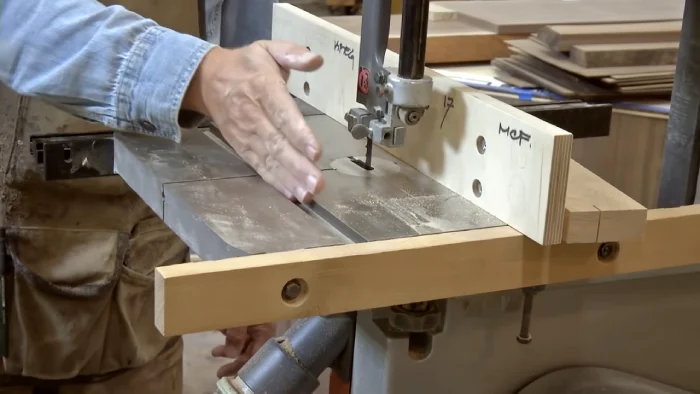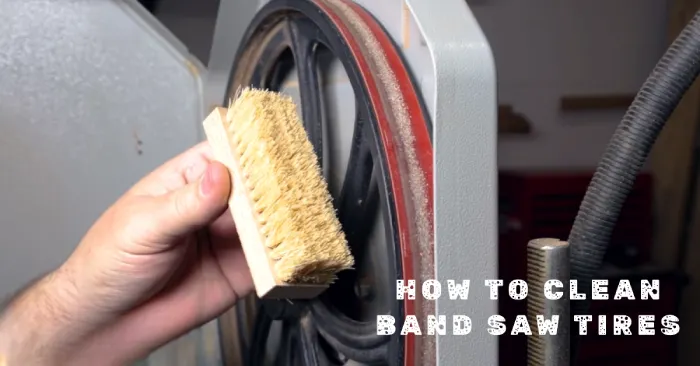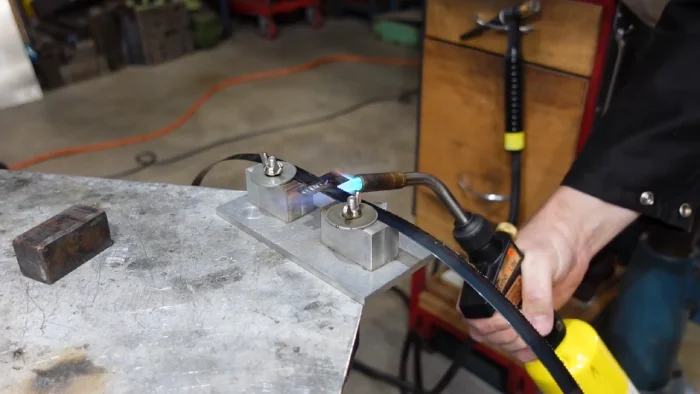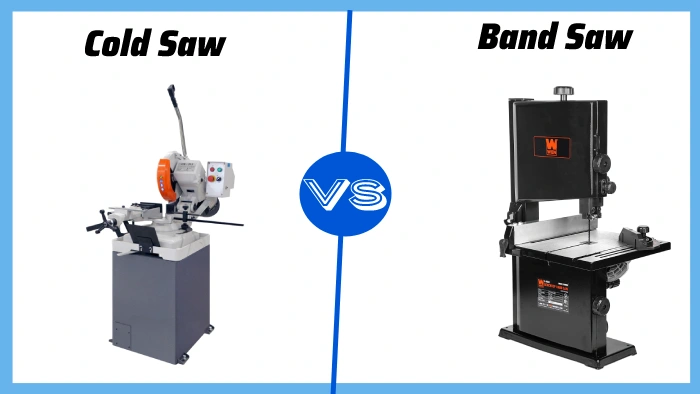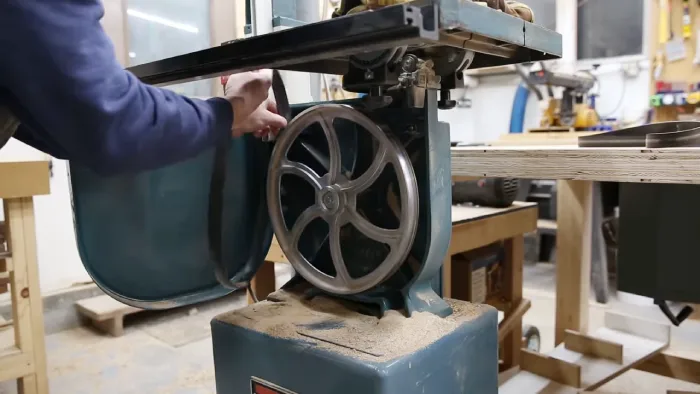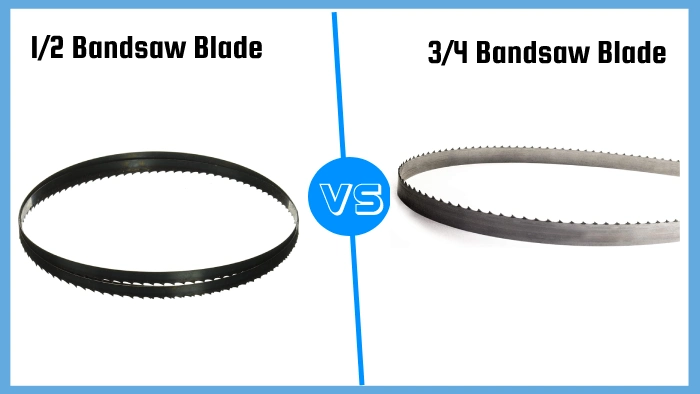Why Does My Bandsaw Blade Twist: 7 Reasons and Solutions
A bandsaw blade’s performance greatly impacts the quality of your cuts for your woodworking projects. You can encounter the blade twisting issue when you work with your bandsaw blades, as many woodworking enthusiasts have experienced.
Based on my research, blade twisting results from various factors. One factor that I have found is misalignment, whether in blade installation, tracking, or wheel alignment.
You can fix this by following the manufacturer’s guidelines, using tracking adjustment mechanisms, and inspecting regularly.
Another culprit that can cause this issue is insufficient or uneven blade tension. To prevent this problem, you must use a tension gauge, follow recommended settings, and ensure even distribution.
I will explain in detail the factors that can cause blade twisting, as well as how to address them so that you can achieve smooth, efficient cutting.
Why Does My Bandsaw Blade Twist: 7 Causes & Solutions
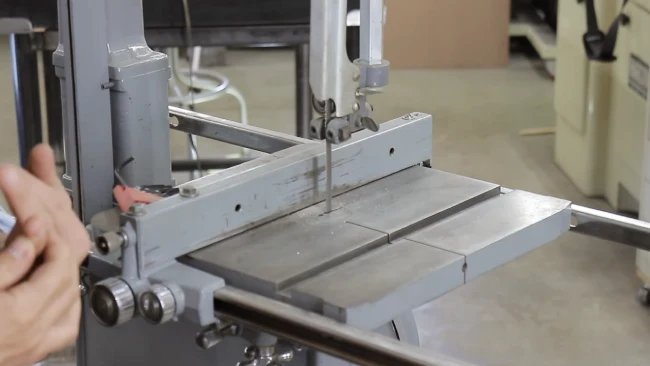
If you’re experiencing bandsaw blade twisting, you should consider the following possible causes that I listed below:
- Blade misalignment
- Insufficient or uneven blade tension
- Misaligned wheel alignment
- Using the wrong type or size of blade
- Incorrect blade guide adjustment
- Using dull blades
- Inappropriate material feed rate
1. Blade Misalignment
Improper alignment of your bandsaw blade can significantly lead to twisting during operation. To prevent this issue, you have to pay attention to the installation and adjustments of the blade.
Start by checking the blade installation to ensure it’s correctly installed with the teeth facing downward. Incorrect installation can cause twists during operation.
Next, verify the blade tracking and make adjustments to ensure it runs along the center of the wheels for smooth operation. Misaligned wheels can also contribute to blade misalignment, so inspecting and aligning the bandsaw wheels properly is essential.
For precise alignment, use a tracking adjustment knob or mechanism, if available, on your bandsaw. Regularly inspecting and maintaining the alignment will help prevent future blade misalignment issues.
2. Insufficient or Uneven Blade Tension
I found that many woodworkers experience bandsaw blade twisting due to insufficient blade tension.
To ensure the right tension on your bandsaw blade, you have to follow the manufacturer’s guidelines provided in the bandsaw manual. These guidelines will recommend the appropriate tension settings based on the blade type and size.
Investing in a tension gauge will help accurately measure and adjust the blade tension. It’s crucial to ensure that the tension is evenly distributed across the entire blade length to prevent twists.
Therefore, periodic checks and readjustments of the blade tension are recommended, especially when changing blade types or sizes.
3. Misaligned Wheel Alignment
Misaligned wheel alignment can also cause bandsaw blade twisting during operation, requiring immediate attention and corrective measures. When the wheels are out of alignment, it can lead to uneven blade tracking, resulting in twists.
To address this issue, start by checking the wheel alignment. Verify that both the upper and lower wheels are aligned properly. If adjustment is necessary, make the necessary changes to ensure even tracking.
Also, inspect the condition of the bandsaw wheels. Ensure that they’re in good condition, free from damage or warping.
4. Using the Wrong Type or Size of Blade
Using the wrong type or size of blade can result in instability and twists during bandsaw operation. Select a blade with the appropriate tooth configuration and width for your specific cutting requirements.
Keeping various blades, such as bi-metal or carbon bandsaw blades, on hand is advisable to match different cutting tasks. Promptly replace worn or damaged blades to maintain optimal cutting performance and achieve the best results in your bandsaw operations.
5. Incorrect Blade Guide Adjustment
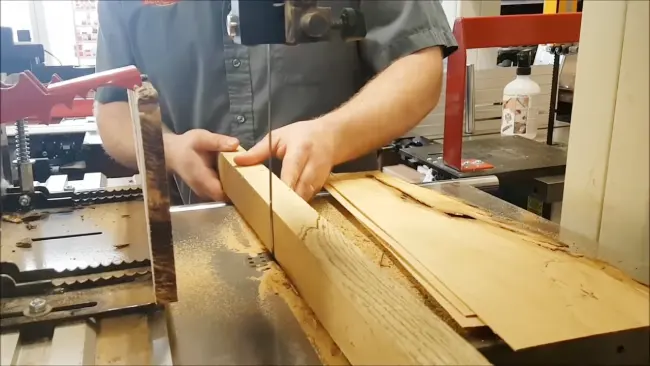
Incorrect blade guide adjustment can contribute to blade twists, causing issues during cutting operations. To rectify this problem, it’s essential to set the upper and lower blade guides as instructed in the manual.
Also, pay attention to the thrust bearing adjustment to ensure it’s correctly positioned, preventing any backward movement of the blade.
Regularly inspect and adjust the blade guides to accommodate different blade sizes and maintain proper alignment. Furthermore, lubricate the guides as the manual recommends to reduce friction and heat, thereby preventing potential blade twisting.
6. Using Dull Blades
When the bandsaw blade becomes dull, it can increase friction and heat, resulting in blade twisting and causing issues during cutting operations. Dull blades are more prone to bending and twisting due to the added resistance they encounter while cutting through materials.
As the blade loses its sharpness, it requires more force to cut, leading to the blade flexing and twisting under the strain. This twisting can cause inaccurate cuts, rough edges, and even damage to the bandsaw itself.
To prevent these issues, you need to regularly maintain your blades by sharpening or replacing them as soon as they become dull. By using sharp blades and avoiding forcing dull blades through materials, you can ensure efficient cutting and prolong the lifespan of your bandsaw blades.
7. Inappropriate Material Feed Rate
Feeding the material too quickly or too slowly can significantly impact the blade’s stability. To ensure optimal feed rate, following the recommended feed rates provided in the bandsaw manual for different materials is important.
Also, it may be necessary to adjust the feed speed based on the specific material being cut to maintain blade stability.
Experimenting with feed rates on scrap material is recommended to find the optimal speed for clean and stable cuts. Furthermore, training operators on proper feed techniques can help avoid unnecessary stress on the blade and ensure consistent results.
What TPI of a bandsaw blade is optimal for cutting thick material without experiencing twisting?
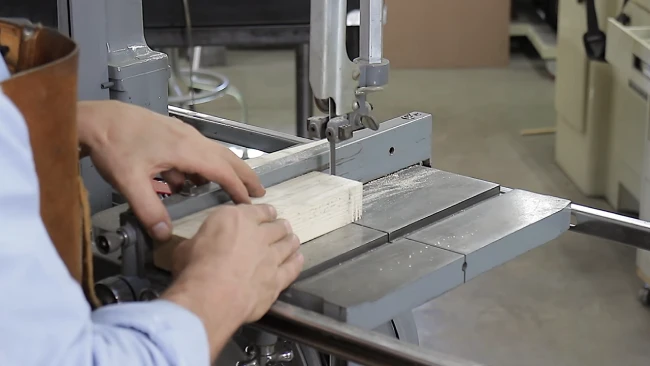
For cutting thick materials without experiencing twisting, it’s optimal to select a bandsaw blade with a lower TPI. A bandsaw blade with 2-3 TPI is recommended for thicker woods, as it provides the necessary aggressiveness to handle the density of the material while ensuring a smoother cut.
This lower tooth count allows for efficient material removal without causing the blade to twist or bind during the cut. You need to balance TPI and material thickness to achieve the best results in bandsaw cutting.
For thinner materials such as plastic, plywood, and aluminum, a fine-tooth blade ranging from 18 to 32 TPI is recommended for a smoother but potentially slower cut.
How often should you sharpen your bandsaw blade to prevent twisting?
The frequency of bandsaw blade sharpening depends on factors such as the material being cut, the blade’s teeth per inch (TPI), and the intensity of use.
As a general guideline, sharpen the blade whenever you notice a decrease in cutting efficiency or struggle to maintain a straight cut. It’s crucial to emphasize the importance of using a high-quality bandsaw machine in conjunction with this maintenance routine.
Also, keep in mind that, generally, a bandsaw blade can be sharpened two or three times before replacement is necessary.
Identify and Address Bandsaw Blade Twisting Problem
Understanding the potential causes and solutions for bandsaw blade twisting is crucial for achieving precise and efficient cuts. Addressing the issues that I have shared with you, from blade misalignment to inappropriate material feed rates, empowers you to enhance the performance of your bandsaw.
By following proper installation, tensioning, and maintenance practices, I hope you’ll minimize blade twisting risks and ensure your bandsaw blades last.
A well-maintained bandsaw blade enhances cutting accuracy and contributes to the overall success of your woodworking endeavors. So, keep these insights in mind to enjoy smoother and more reliable bandsaw operations.

